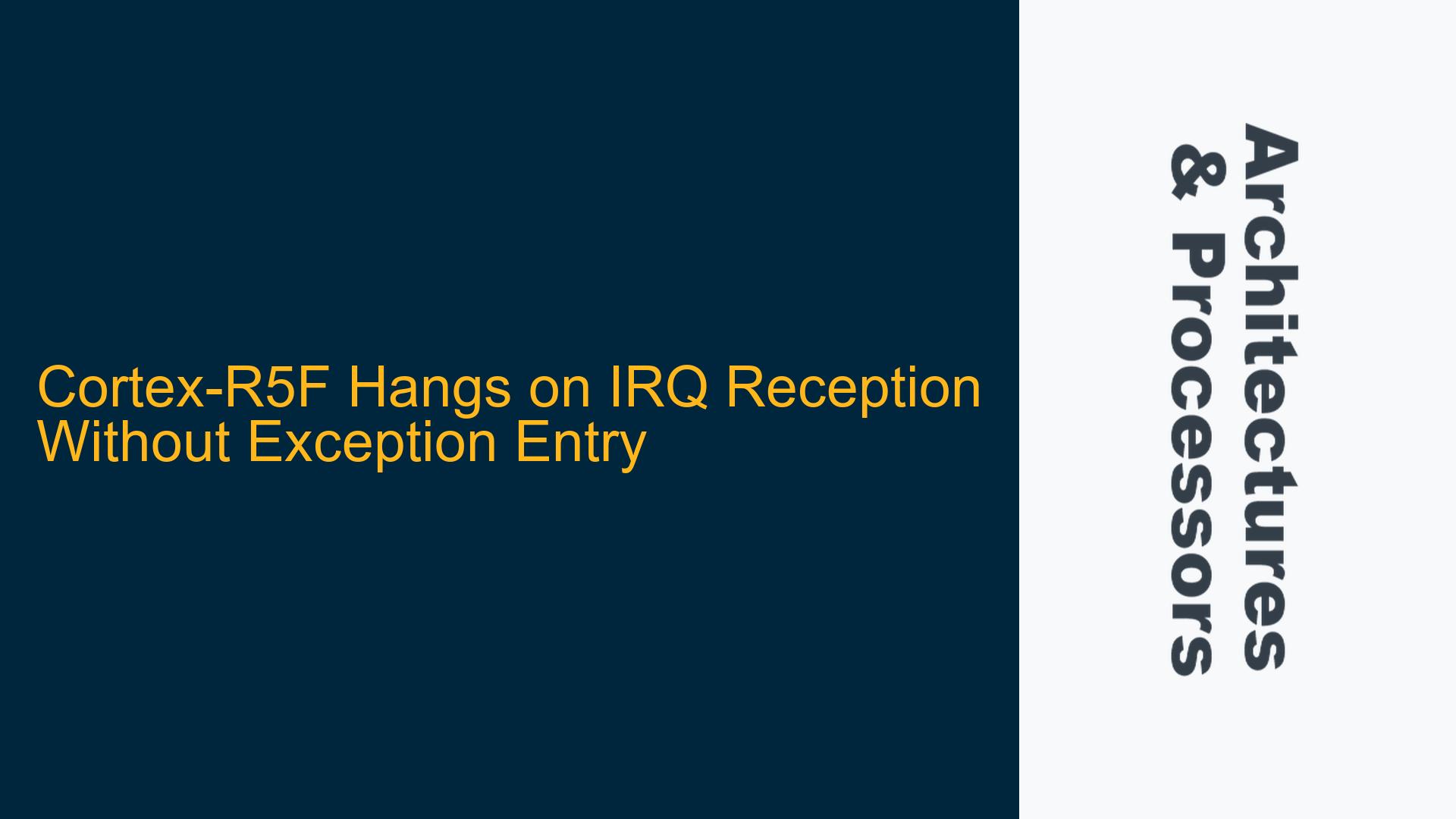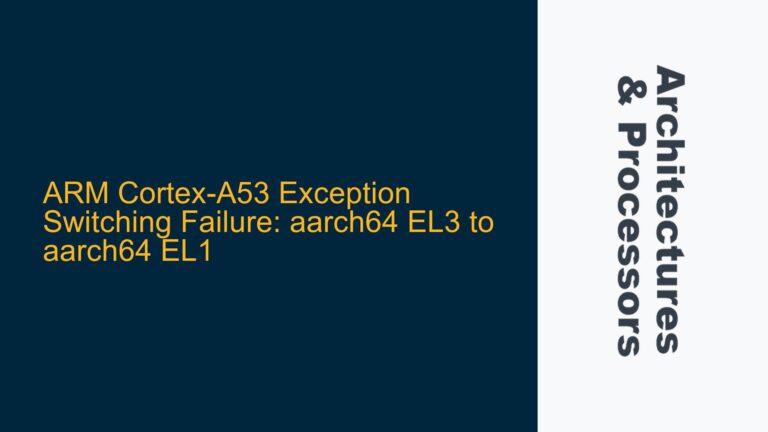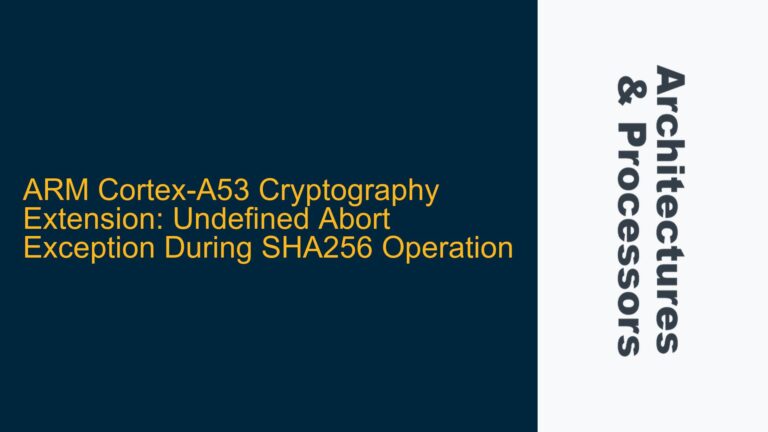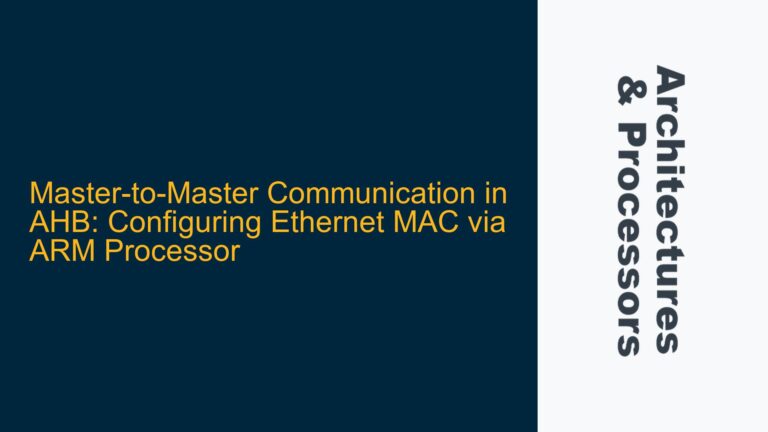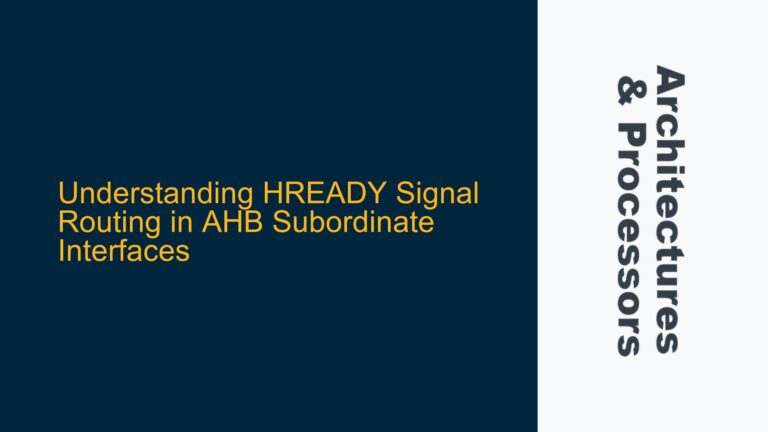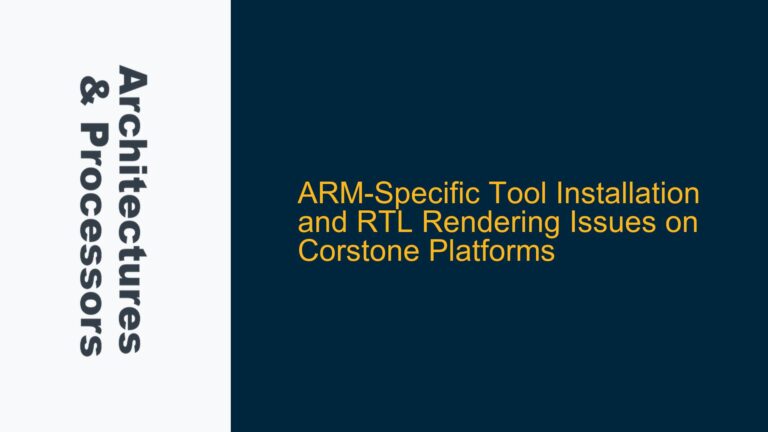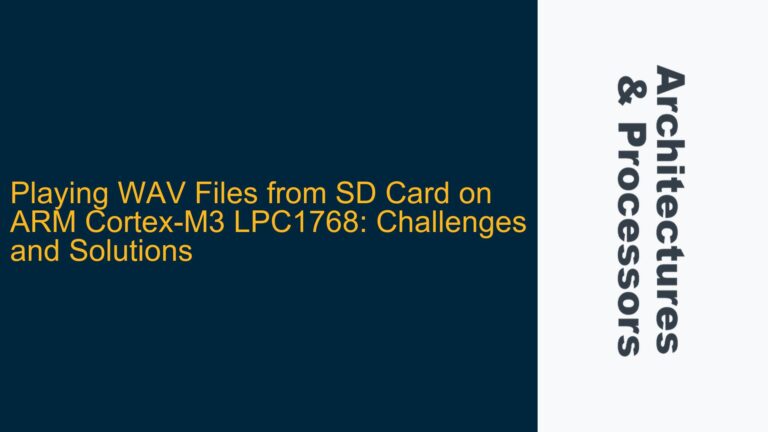Cortex-R5F IRQ Handling Failure Leading to System Hang
The Cortex-R5F processor, a member of ARM’s Cortex-R series, is designed for real-time applications requiring high reliability and deterministic behavior. However, in certain configurations, particularly when interfacing with interrupt controllers like the GIC (Generic Interrupt Controller) and peripherals such as the TTC (Triple Timer Counter) on Xilinx UltraScale+ SoCs, the Cortex-R5F can exhibit a system hang upon receiving an IRQ (Interrupt Request). This issue is particularly perplexing because the processor does not enter the expected exception vector, making it difficult to diagnose the root cause.
The problem manifests when the Cortex-R5F is configured to handle interrupts from a TTC timer. The IRQ is successfully delivered to the processor, but instead of executing the corresponding interrupt service routine (ISR), the processor hangs. This behavior is observed only when the IRQ is unmasked and routed through the GIC. Masking the IRQ, disabling IRQ routing in the GIC, or disabling the TTC timer’s IRQ generation prevents the hang, indicating that the issue is directly related to the IRQ handling mechanism.
Interestingly, the problem does not occur when the processor is in JTAG debug mode, suggesting that the debug interface might be altering the system’s behavior in a way that masks the issue. This discrepancy between normal operation and debug mode further complicates the diagnosis, as it implies that the problem might be related to timing, memory access, or interrupt prioritization.
Potential Causes: IRQ Delivery, Vector Table Access, and GIC Configuration
The root cause of the Cortex-R5F hang upon IRQ reception can be attributed to several potential issues, each of which must be carefully examined to identify the exact failure mechanism.
IRQ Delivery and Vector Table Access
One possible cause is a problem with the IRQ delivery mechanism or the processor’s attempt to access the interrupt vector table. When an IRQ is received, the Cortex-R5F fetches the corresponding exception vector from the vector table located in memory. If the vector table is not properly configured or if there is an issue with the memory subsystem, the processor might fail to fetch the correct vector, leading to a hang.
The fact that the processor does not enter the exception vector suggests that the issue might be related to the initial stages of interrupt handling. This could include problems with the vector table base address register (VBAR), memory protection units (MPUs), or cache coherency. For example, if the vector table is located in a memory region that is not accessible due to MPU configuration or cache invalidation issues, the processor might hang while attempting to fetch the vector.
GIC Configuration and Interrupt Routing
Another potential cause is an incorrect configuration of the GIC, which is responsible for routing interrupts to the Cortex-R5F. The GIC must be properly configured to ensure that interrupts are correctly prioritized, enabled, and routed to the appropriate processor core. If the GIC is misconfigured, it might deliver an IRQ that the Cortex-R5F cannot handle, leading to a hang.
The GIC configuration includes several critical parameters, such as interrupt priority, enable/disable settings, and target processor selection. If any of these parameters are incorrectly set, the GIC might deliver an IRQ that the Cortex-R5F cannot process, either because the interrupt priority is too high, the interrupt is not enabled, or the target processor is not correctly specified.
Debug Mode vs. Normal Operation
The observation that the problem does not occur in JTAG debug mode suggests that the debug interface might be altering the system’s behavior in a way that masks the issue. In debug mode, the processor might be operating with different timing characteristics, memory access patterns, or interrupt handling mechanisms. This could indicate that the issue is related to timing or synchronization, particularly if the problem only manifests under specific operating conditions.
For example, in debug mode, the processor might be operating at a lower clock frequency, which could affect the timing of interrupt delivery and handling. Alternatively, the debug interface might be bypassing certain memory access or cache coherency mechanisms, which could mask issues related to vector table access or interrupt handling.
Troubleshooting Steps: Diagnosing and Resolving IRQ Handling Issues
To diagnose and resolve the Cortex-R5F hang upon IRQ reception, a systematic approach is required. The following steps outline a comprehensive troubleshooting process, including potential solutions and fixes.
Step 1: Verify Vector Table Configuration
The first step is to verify that the vector table is correctly configured and accessible to the Cortex-R5F. This includes checking the vector table base address register (VBAR) to ensure that it points to the correct memory location. Additionally, the memory region containing the vector table must be properly configured in the MPU to allow access by the processor.
If the vector table is located in a cached memory region, ensure that cache coherency is maintained. This might involve invalidating the cache or using memory barriers to ensure that the vector table is correctly fetched from memory. If the vector table is located in an external memory device, verify that the memory controller is correctly configured and that there are no timing or access issues.
Step 2: Check GIC Configuration
Next, verify the configuration of the GIC to ensure that interrupts are correctly prioritized, enabled, and routed to the Cortex-R5F. This includes checking the interrupt priority settings, enable/disable bits, and target processor selection. Ensure that the GIC is correctly initialized and that all necessary interrupts are enabled.
If the GIC is misconfigured, it might deliver an IRQ that the Cortex-R5F cannot handle. For example, if the interrupt priority is set too high, the processor might be unable to process the interrupt, leading to a hang. Similarly, if the interrupt is not enabled or the target processor is not correctly specified, the GIC might deliver an IRQ that the Cortex-R5F cannot process.
Step 3: Investigate Debug Mode Behavior
Given that the problem does not occur in JTAG debug mode, it is important to investigate the differences between debug mode and normal operation. This includes comparing the clock frequency, memory access patterns, and interrupt handling mechanisms in both modes.
If the issue is related to timing or synchronization, adjusting the clock frequency or adding delays to the interrupt handling code might resolve the problem. Alternatively, if the debug interface is bypassing certain memory access or cache coherency mechanisms, it might be necessary to modify the system configuration to ensure that these mechanisms are correctly implemented in normal operation.
Step 4: Implement Data Synchronization Barriers and Cache Management
If the issue is related to cache coherency or memory access timing, implementing data synchronization barriers (DSBs) and cache management instructions might resolve the problem. DSBs ensure that all memory accesses are completed before proceeding, which can help to avoid timing issues related to interrupt handling.
Additionally, cache management instructions, such as cache invalidation or cleaning, can help to maintain cache coherency and ensure that the vector table is correctly fetched from memory. If the vector table is located in a cached memory region, it might be necessary to invalidate the cache before accessing the vector table to ensure that the correct data is fetched.
Step 5: Test with Different Interrupt Sources
To further isolate the issue, test the Cortex-R5F with different interrupt sources to determine whether the problem is specific to the TTC timer or if it occurs with other interrupts as well. If the problem only occurs with the TTC timer, it might be related to the timer’s configuration or the specific IRQ line used by the timer.
If the problem occurs with other interrupt sources, it might be related to the GIC configuration or the Cortex-R5F’s interrupt handling mechanism. In this case, further investigation into the GIC and processor configuration is required to identify the root cause.
Step 6: Analyze System Logs and Debug Output
Finally, analyze system logs and debug output to gather additional information about the system’s behavior when the hang occurs. This might include examining the processor’s registers, memory contents, and interrupt status at the time of the hang. Debugging tools, such as JTAG probes or logic analyzers, can be used to capture this information and provide insights into the system’s state when the hang occurs.
By systematically analyzing the system’s behavior and comparing it to the expected behavior, it is possible to identify the root cause of the hang and implement a solution. This might involve modifying the system configuration, adjusting the interrupt handling code, or implementing additional synchronization mechanisms to ensure that the Cortex-R5F can correctly handle interrupts.
Conclusion
The Cortex-R5F hang upon IRQ reception is a complex issue that requires a thorough understanding of the processor’s interrupt handling mechanism, the GIC configuration, and the system’s memory and cache architecture. By following the troubleshooting steps outlined above, it is possible to diagnose and resolve the issue, ensuring that the Cortex-R5F can reliably handle interrupts and operate as intended in real-time applications.
